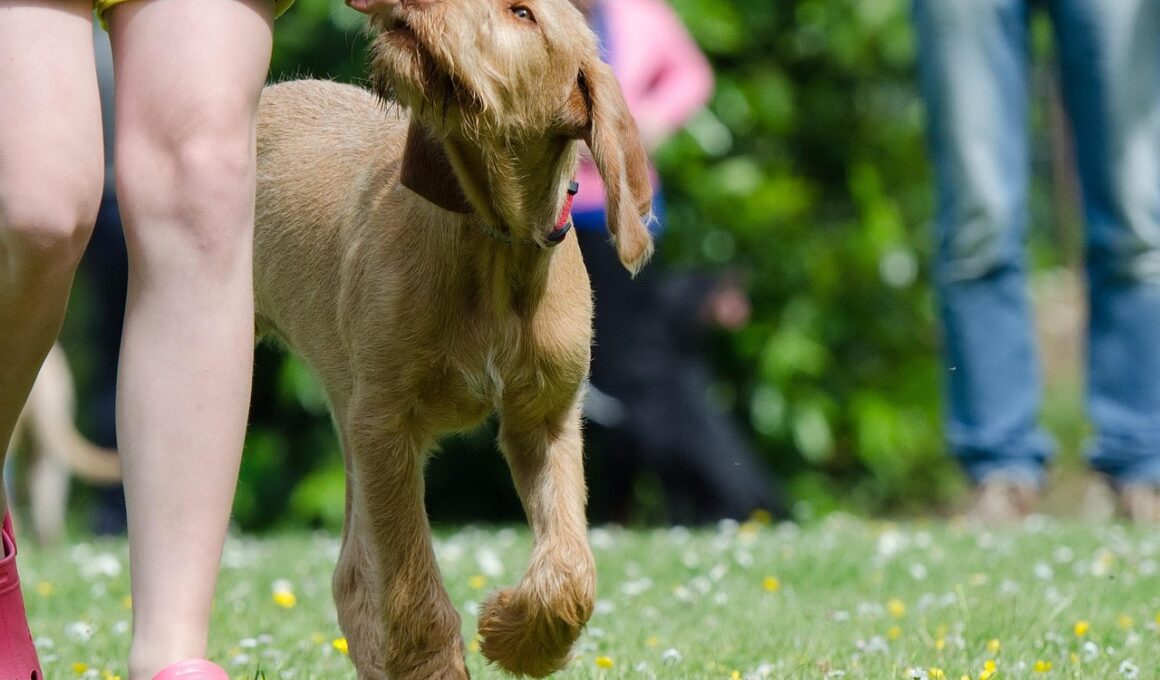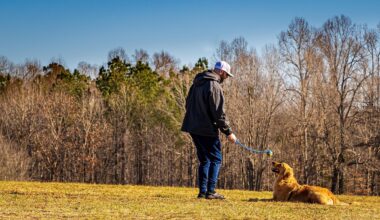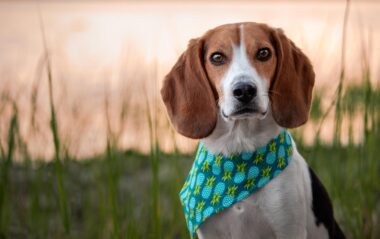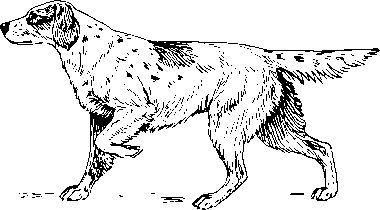Scent Training for Different Dog Breeds: What You Need to Know
Scent training is an essential skill, regardless of your dog breed. Certain breeds excel at scent work more than others, showcasing natural abilities. Breeds like Bloodhounds and Beagles are recognized for their extraordinary olfactory senses which makes them ideal candidates. Interestingly, even though some breeds are naturally predisposed, all dogs have the capability to learn scent detection skills. Engaging in this type of training not only benefits specific tasks like search and rescue work but also helps strengthen the bond between the dog and owner. Hence, scent training serves dual purposes: enhancing its natural instincts while promoting teamwork. Utilizing play and reward-based systems can further motivate your dog during training. Practical exercises combined with exciting scents create a positive experience and instill enthusiasm in the dog. Consistency in approach allows dogs to understand what is expected. Moreover, patience is key in this training. Each dog, regardless of breed, learns at its own pace, and it’s important to respect that. Setting achievable goals will sustain their interest and stimulate their enthusiasm as they progress.
Choosing the Right Scent for Training
Choosing appropriate scents is vital to ensure effective training for your dog. Peanut butter, vanilla, or even essential oils can be excellent starting points. Initially, you may opt to introduce your dog to scents that are familiar and appealing to them. Engaging their senses right from the beginning fosters curiosity and excitement. Gradually, you can move towards more complex scents that require the dog to put in additional effort to locate. It’s also essential to ensure that the oils or scents are safe for dogs, avoiding harmful substances. Always attempt to work with non-toxic options so that your furry friend remains healthy throughout training. Various blends can be employed to maintain interest and keep training sessions stimulating. Furthermore, consider varying the environment during training, changing locations, or conditions to keep your dog challenged. Like humans, dogs may experience fatigue or boredom, so it’s crucial to switch things up. Adjusting the scents based on your dog’s reactions and preferences can optimize their learning and performance, making each session more enjoyable for both you and your dog.
Continuing with the focus on hunting breeds, it’s interesting to note that breeds specifically designed for hunting, such as Labrador Retrievers or German Shepherds, also benefit immensely from scent training. These dogs are not just capable but are also selected for their aptitude toward scent work. Engaging in scent training provides them with a necessary outlet for their energy and an exciting challenge to tackle that aligns with their instincts. Utilizing their drive for retrieving or tracking, you can implement various training methods such as trailing or detecting specific scents. Positive reinforcement plays a significant role, rewarding the dog every time it successfully identifies a correct scent. This builds both confidence and motivation, encouraging them to participate eagerly in future sessions. Keep in consideration that routine practice contributes significantly to mastery as dogs can forget learned skills without regular involvement. Incorporating various challenges or levels can enhance their capacities and allow you to regulate their progress. A well-structured training program designed around the dog’s capabilities promises an enriching experience, thereby cultivating their natural scenting potential.
Scent Tracking for Companion Breeds
While scent training is particularly beneficial for working breeds, companion breeds like Pugs and Cavalier King Charles Spaniels can also thrive through engaging exercises. Even though these breeds lack the instinctive drive for scent work, they can learn valuable skills with consistent training. The key is to tailor your approach, focusing on fun and engaging methods that will hold their interest. Begin with short sessions and simple scents, creating a positive environment that encourages curious exploration. Utilizing toys infused with specific scents can significantly enhance motivation, blending playtime with learning effectively. This further encourages them during training and reduces resistance. The social aspect of training cannot be overlooked, as these breeds love to interact with their human companions. Incorporating family members in training can amplify their experience, providing reassurance and maintaining interest. Always celebrate small victories, rewarding right behaviors with treats or praise, fostering a sense of achievement. Over time, as their abilities develop, increase the complexity of tasks to continually challenge them, ensuring sustained engagement throughout their training journey.
Understanding each breed’s unique characteristics can guide effective training approaches. For instance, herding breeds such as Border Collies or Australian Shepherds have high energy levels and focus, showcasing an eagerness to learn. Adjusting training methodologies by incorporating dynamic activities can engage these breeds effectively. Using their natural herding instincts in scent training adds an enriching layer to their learning experience. Engaging them with scent-related games that connect to their innate behaviors fosters a deeper understanding of scent detection. This way, challenging their intelligence becomes part of the training regime. Furthermore, consider environmental factors such as distractions that might hinder their focus. Maintaining a controlled setting during indoor training is beneficial initially, allowing them to learn without distractions. As they progress, gradually introduce external elements that present new challenges. This method assists in building their ability to concentrate under various conditions. Practicing in real-life settings, like parks or open fields, prepares them for scenarios they may encounter while working in the field or at home, ensuring a versatile skill set that proves beneficial in various scenarios.
Utilizing Games in Scent Training
Incorporating games is an invaluable strategy to make scent training enjoyable for your dog. Games such as hide and seek or treasure hunts provide excellent opportunities to engage your dog in scent detection actively. Start simple by placing treats or toys in easy-to-find areas, encouraging your dog to use its nose. Gradually increase the complexity by hiding the items in more challenging spots, stimulating their problem-solving skills. The themes for the games can also be adjusted depending on the dog’s progress, maintaining freshness and excitement. Creating a solid routine of using games helps in understanding their unique scent capabilities while building lasting memories. In addition, leveraging positive reinforcement boosts their confidence during play, making them enthusiastic participants. Rewarding them periodically with treats enhances the overall training experience, making them associate scent tracking with fun and rewards. Additionally, these game-based approaches foster the bond between the dog and owner, establishing trust through mutual interaction. Over time, you can even introduce a competitive edge during training sessions, offering small prizes. This promotes motivation further, ensuring that learning remains dynamic and engaging, which can be tremendously beneficial.
When considering scent training, consistency is a vital component. Regular practice helps in reinforcing learned behaviors, ensuring your dog doesn’t regress but rather builds upon their skills effectively. Organizing a structured training schedule aids in creating a routine that dogs easily adapt to. Allocate specific time slots within your weekly agenda dedicated to scent training, enhancing predictability. Ensure sessions are varied and vibrant to sustain engagement among different breeds. Short but focused sessions often yield better results than prolonged training, considering the attention spans of various breeds. Over time, introduce new challenges or lower difficulty levels to match their learning curve, allowing them to feel a sense of accomplishment. For instance, practicing scent trails outdoors will differ vastly from confined spaces, requiring adaptability. Engaging in public settings further teaches dogs to focus despite environmental distractions, preparing them for real-world applications. This adaptability is crucial for both hunting and companion breeds, allowing them to navigate challenging scenarios effectively. Remembering to keep things fun and exciting amidst all forms of training will ensure that your dog maintains a positive view toward learning new skills.
A Final Note on Scent Training
Scent training offers numerous advantages for different dog breeds. From strengthening bonds to enhancing natural abilities, the benefits are extensive. Encouraging healthy engagement through scent exercises enriches their lives, allowing for mental stimulation and physical activity. Regardless of breed, every dog possesses an innate curiosity that can be tapped into through smell training. Remember that effective training fosters trust, patience, and understanding between you and your furry companion. Observing your pets learning reveals critical insights into their behavior and thought processes. Therefore, embrace each moment spent training, transforming perceived challenges into enjoyable endeavors. Whether your goal lies in enhancing companionship or preparing for specific tasks, scent training is invaluable. Knowing how to approach training based on the dog’s breed will ultimately lead to more fruitful sessions. Incorporate fun challenges, impressing upon them the value of teamwork, and watch them thrive. Each success, no matter how small, should be celebrated as part of the journey, reinforcing positive behavior. With continued effort, patience, and creativity, scent training not only improves a dog’s abilities but also deepens the connection between you and your canine friend.





